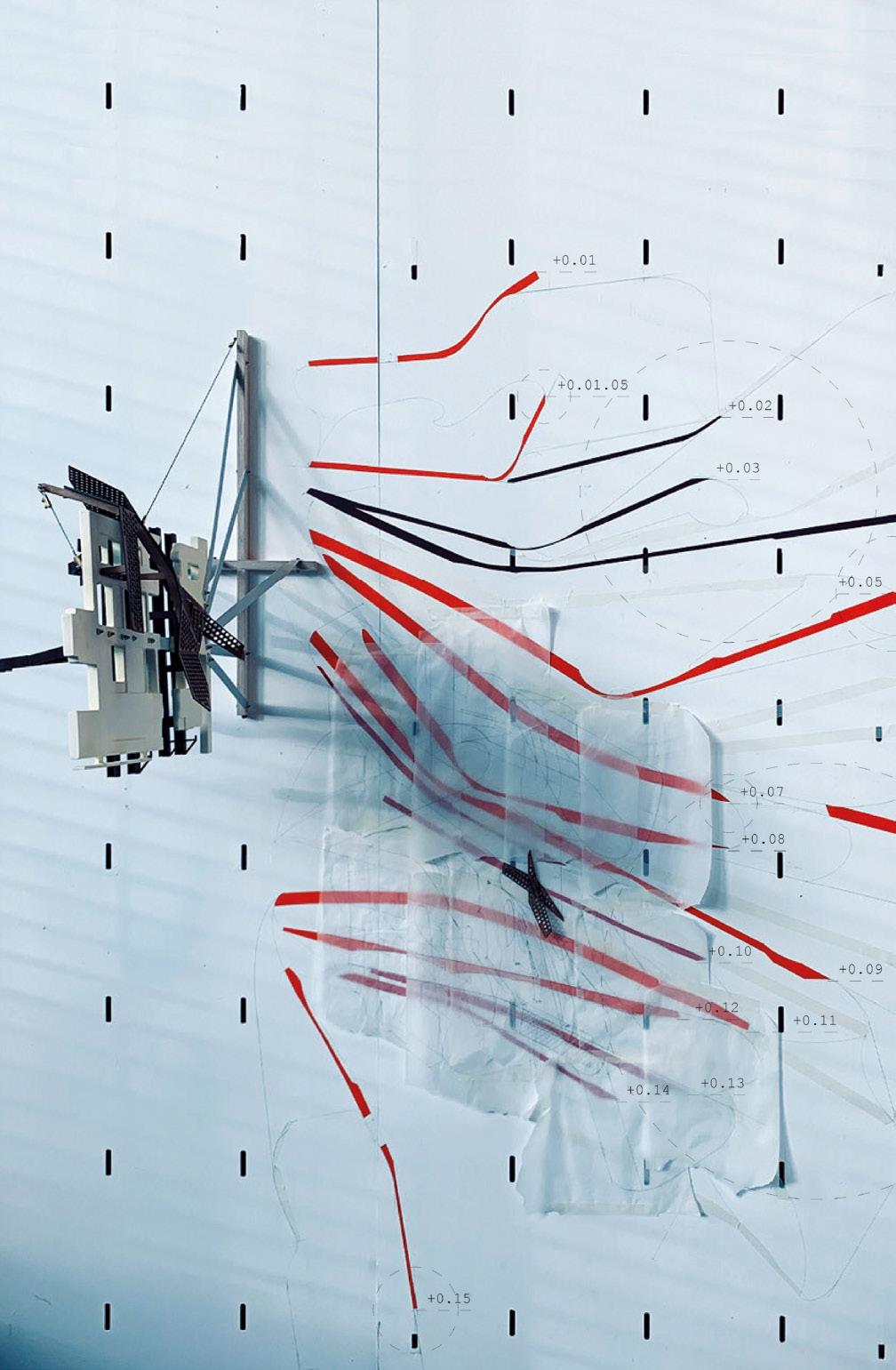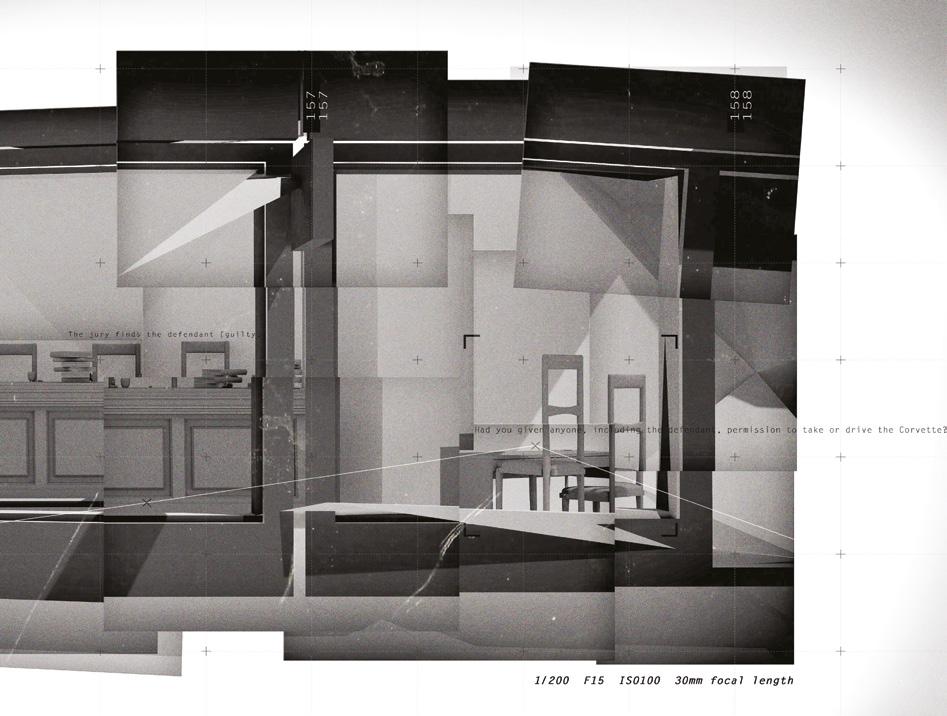
3 minute read
Unit 21
MArch ARCHITECTURE
UNIT 21: Rivers of London —The Walbrook
Advertisement
SHAUN MURRAY + SIMON WITHERS
Year 2: Dhaniah Binti Abdul Samad, Ludovico Altieri, Silvia Miah, Matthew Smith, Adam Stacey, Sharifah Nur Amirah Binti Syed Muhammad Radhi.
Year 1: Belen Abebe, Lauren Bryce, Vince Choi, Gabriel Corduneanu, Nophill Damaniya, Thuong Hiep Duong, Andreia Gomes, Lucas Johnson, Eleonora Tucci.
With thanks: To our practice tutor Harry Bucknall (Piercy& Company), along with our critics Mark Davies, David Hemingway, Jake Moulson, Marcel Rahm, Chris Roberts.
“The River Walbrook is the most mysterious, elusive and comprehensively buried of London's Lost Rivers. Its confluence with the Thames is the place where recorded London began.” —Tom Bolton
SITE
Lying between the low City hills of Ludgate and Cornhill, the Walbrook can be divined speculatively from topographical and nomenclatural clues. Flowing from Holywell under Sun Street Lane, via aqueduct through the London Wall, past Bedlam Burying Ground, Angel Court, Whalebone Alley and Token House Yard, along Lothbury, stepping quickly down into Soane's temple at Tivoli Corner thence upwards to exit from the crypt of Hawksmoor's "square within a square", “where St Mary Woolnoth kept the hours/With a dead sound on the final stroke of nine”. Now Poultry and Cloak Lane, skirting the fiscally insular but fabulously louche Hanseatic Steel Yard before sluicing into the Thames at the mouth of the Dowgate Inlet.
BRIEF
The Walbrook and the City were the provocations for the students investigations. These investigations were conducted in three phases and at the three scales of the tool, the occupant and the vessel. Each phase became the foundation of the following phase. Phase One was the Registration of the River Walbrook, Phase Two the Research and Development of projects and Phase Three the Resolution of Engineered Architecture. Each Phase was conducted in a distinct timeframe. Phase One was weeks 1–6 (6 weeks) of Term 1 and was fully supported by intensive drawing and modelling sessions. Phase Two was from week 7 in Term 1 to week 3 of Term 2 (9 weeks). Phase Three was from week 4 in term 2 to week 12 in Term 2 (9 weeks).
SCHEDULE
In Phase One the students undertook the registration of the Walbrook topographic catchment area by making close field observations carried out over time by using a variety of tools, including; sketching, scanning, surveying, photogrammetry, film, lux meters, microphones and GPS coordinates, in order to investigate the existing spatial, temporal, environmental and sonic contexts. This data was then utilized through drawing and modelling to fully develop the students own tool kit—a rig—that became the foundation of their Phase Two and Phase Three projects.
LABORATORY
Downriver from Dowgate Inlet, here at Greenwich, are the great baroque architectures and landscapes of the Old Royal Naval College, Queen's House and the Royal Park. As a laboratory for our explorations at Walbrook, Unit 21 utilised the Painted Hall, King William Court and the Vista Land to test our rigs and our tool kit technologies such as scanning and photogrammetry. We worked closely with the ORNC who were our guides through the histories, politics and hidden interstitial spaces of Wren's, Hawksmoor's, Vanbrugh's and Jones' masterpieces.



1

2

3

1 Silvia Miah
Birds City 2 Belen Abebe
City Lights Theatre: A Study of Breaking the Fourth Wall 3–5 Sharifah Nur Amirah Binti Syed
Muhammad Radhi
The Architecture of Creative Misuse


4

5



↑ → Vince Choi
The Public Mental Health
Behavioural Experiment









